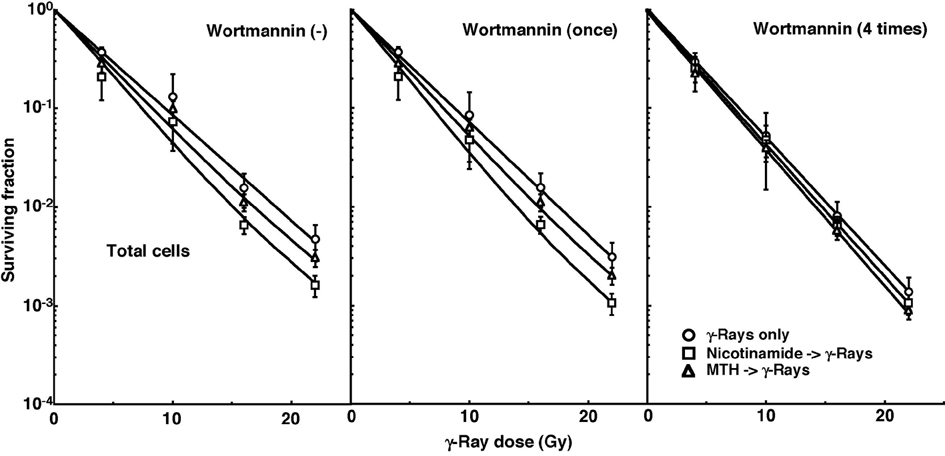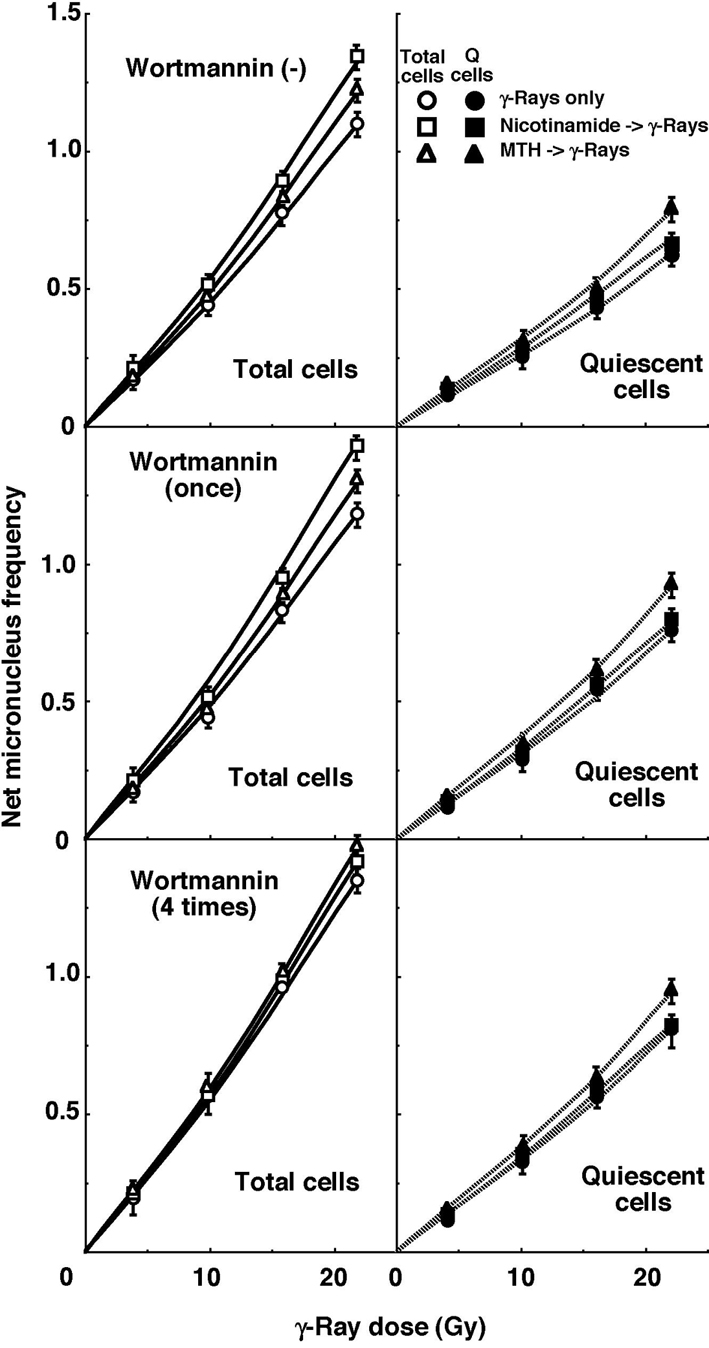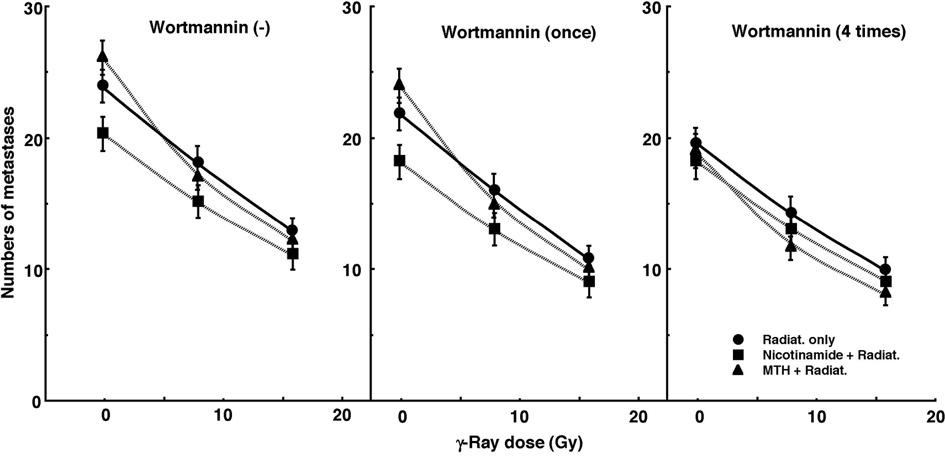
Figure 1. Cell survival curves for the total cell population from B16-BL6 tumors irradiated with γ-rays following single or four intraperitoneal administrations of wortmannin in combination with nicotinamide treatment or mild temperature hyperthermia (MTH) on day 18 after tumor cell inoculation. Circles, γ-ray irradiation only; Squares, γ-ray irradiation with nicotinamide treatment; Triangles, γ-ray irradiation with MTH. Bars represent standard errors (n = 9).

Figure 2. Dose response curves of the net micronucleus frequency for total (open symbols, left panels) and quiescent (solid symbols, right panels) cell populations from B16-BL6 tumors irradiated with γ-rays following single or four intraperitoneal administrations of wortmannin in combination with nicotinamide treatment or mild temperature hyperthermia (MTH) on day 18 after tumor cell inoculation. Circles, γ-ray irradiation only; Squares, γ-ray irradiation with nicotinamide treatment; Triangles, γ-ray irradiation with MTH. Bars represent standard errors (n = 9).

Figure 3. Cell survival curves for the total cell population from B16-BL6 tumors irradiated with γ-rays following single or four intraperitoneal administrations of wortmannin in combination with nicotinamide treatment or mild temperature hyperthermia (MTH) on day 18 after tumor cell inoculation. Circles, γ-ray irradiation only; Squares, γ-ray irradiation with nicotinamide treatment; Triangles, γ-ray irradiation with MTH. Bars represent standard errors (n = 9).


